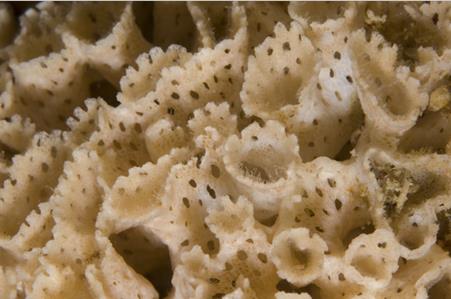General Description
Flat lattice sheet-like colony of tiny individual animals (zooids) that forms into folded/curled circular structures. Colony up to about 15 cm high.
Biology
The folds of these colonies provide shelter for many small invertebrates such as polychaete worms and amphipod crustaceans. Bryozoan colonies like this species feed using a circlet of tentacles (lophophore) which filters the water. Most bryozoans are hermaphrodites, either containing separate female and male zooids in the colony, or containing both sexes within the one zooid. Colonies can grow quickly and thus some species can be a pest if they foul hulls of ships or the wooden structures of piers.
Habitat
Usually anchored to hard rocky or shelly surfaces.
Reefs
Species Group
Depth
Water Column
Max Size
15 cm
Diet
Plankton or particles
Commercial Species
No
Global Dispersal
Recorded in Australia
Conservation Status
- DSE Advisory List : Not listed
- EPBC Act 1999 : Not listed
- IUCN Red List : Not listed




